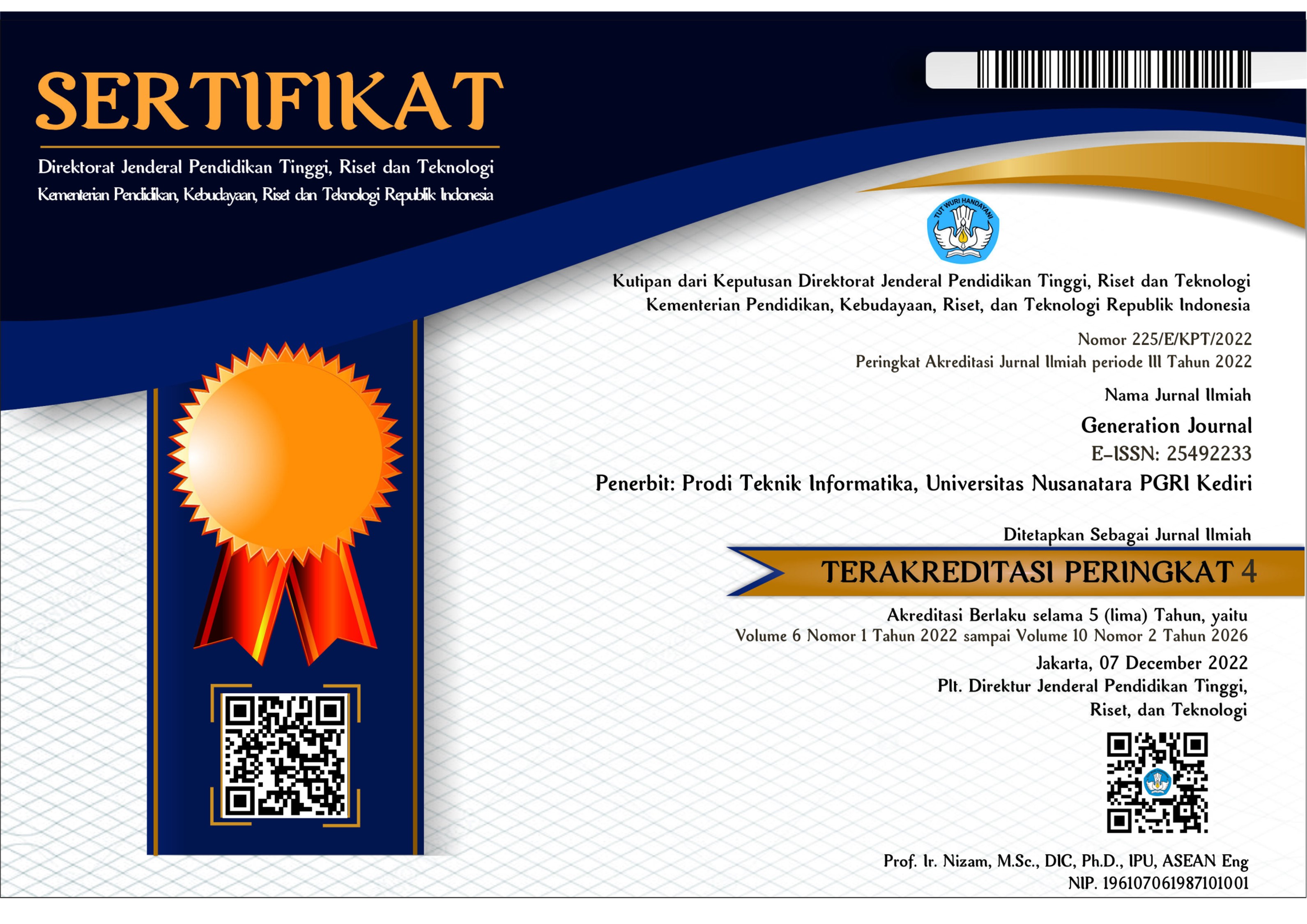Analysis of the Effect of Dynamic Pricing Based on Intelligent Transportation Systems on User Preferences for Online Transportation Modes
DOI:
https://doi.org/10.29407/gj.v9i2.25881Keywords:
User Preference; Intelligent Transportation Systems; Dynamic Pricing; Online TransportationAbstract
The development of digital technology in the transportation sector has led to the emergence of online transportation services with the application of dynamic pricing based on Intelligent Transportation Systems (ITS). This study aims to analyze the influence of perceptions toward dynamic pricing and ITS on users' preferences in choosing online transportation modes. The method used is quantitative descriptive, with a questionnaire distributed to 81 PKTJ Tegal students as the sample, selected through purposive sampling technique. Data were analyzed using descriptive statistics via SPSS to identify trends in respondents' perceptions and preferences. Results indicate that perceptions of ITS have a high average score (4.04), followed by preferences for using online transportation modes (3.97), and perceptions of dynamic pricing (3.62). These findings indicate that fares are fluctuating, and users' trust in the efficiency and fairness of the ITS system remains high for online transportation services. This study contributes to providing an empirical overview of the importance of ITS in improving service quality and user preferences, as well as offering recommendations for the broader development of ITS-based transportation systems, particularly in developing cities like Tegal
References
[1] Sugianto and M. A. Kurniawan, “TINGKAT KETERTARIKAN MASYARAKAT TERHADAP TRANSPORTASI ONLINE, ANGKUTAN PRIBADI DAN ANGKUTAN UMUM BERDASARKAN PERSEPSI,” Jurnal Teknologi Transportasi dan Logistik, vol. 1, no. 2, pp. 51–58, Dec. 2020.
[2] I. E. Retno and S. Wijihastuti, “Exploring the Intention Factors of Using Online Transportation in Jakarta with Multiple Regression,” Journal of Business & Applied Management, vol. 14, no. 1, pp. 001–016, Mar. 2021, Accessed: Jul. 06, 2025. [Online]. Available: https://journal.ubm.ac.id/index.php/business-applied-management/article/view/2680
[3] M. Ferdila, D. Kasful, and A. Us, “Analisis Dampak Transportasi Ojek Online Terhadap Pendapatan Ojek Konvensional di Kota Jambi,” IJIEB: Indonesian Journal of Islamic Economics and Business, vol. 6, no. 2, p. 2021, Dec. 2021, [Online]. Available: http://e-journal.lp2m.uinjambi.ac.id/ojp/index.php/ijoieb
[4] M. A. Nuh, S. Maryam H, and M. T. Syarkawi, “Analisis Pemilihan Moda Transportasi Online dan Angkutan Kota bagi Pegawai Balai Besar Pelaksana Jalan Nasional,” Jurnal Konstruksi: Teknik Infrastruktur dan Sains, vol. 1, no. 2, 2022.
[5] A. T. Kamma, C. D. Suhendra, and L. F. Marini, “Rancang Bangun Sistem Informasi Pengaduan Perbaikan Jalan Berbasis Website Design and Development of a Website-Based Road Repair Complaints Information System,” JOURNAL OF INFORMATION SCIENCE AND TECHNOLOGY, vol. 13, no. 2, Oct. 2024.
[6] O. A. Gusnita, M. S. Stisipol Dharma, and W. Metro, “EVALUASI PRO KONTRA TRANSPORTASI ONLINE”.
[7] S. , Farisi and Q. R. Siregar, “TINGKAT KETERTARIKAN MASYARAKAT TERHADAP TRANSPORTASI ONLINE, ANGKUTAN PRIBADI DAN ANGKUTAN UMUM BERDASARKAN PERSEPSI,” Jurnal Ilmiah Magister Manajemen, vol. 3, no. 1, pp. 148–159, Apr. 2020.
[8] T. Ilyas Rinaldi, N. Syarief, and U. Pembangunan Nasional Veteran Jakarta, “ANALISIS KEPUTUSAN PENGGUNAAN TRANSPORTASI ONLINE GRABCAR,” PROSIDING BIEMA Business Management, Economic, and Accounting National Seminar, vol. 1, pp. 160–170, 2020.
[9] E. Wulandari, H. Faturrohman, and S. T. Widodo, “PENGARUH PENGGUNAAN MEDIA INTERAKTIF TERHADAP MOTIVASI BELAJAR PESERTA DIDIK MATA PELAJARAN PENDIDIKAN PANCASILA KELAS II SDIT INSAN MULIA SEMARANG.” Accessed: Jun. 03, 2025. [Online]. Available: https://journal.stkipsubang.ac.id/index.php/didaktik/article/view/2086/1739
[10] A. Sugiarto and J. A. Dewantara, “Persepsi Guru IPS Kota Singkawang Terhadap Literasi Digital dalam Mendukung Kegiatan Pembelajaran di Era Revolusi Industri 4.0,” vol. 5, no. 3, 2021, doi: 10.31004/basicedu.v5i3.982.
Downloads
Published
Issue
Section
License
Copyright (c) 2025 Azzah Ula Nabillah Yoni, Mega Sintya Ose Attawuwue, Rizal Aprianto

This work is licensed under a Creative Commons Attribution-ShareAlike 4.0 International License.
Authors who publish with this journal agree to the following terms:
- Copyright on any article is retained by the author(s).
- The author grants the journal, the right of first publication with the work simultaneously licensed under a Creative Commons Attribution License that allows others to share the work with an acknowledgment of the work’s authorship and initial publication in this journal.
- Authors are able to enter into separate, additional contractual arrangements for the non-exclusive distribution of the journal’s published version of the work (e.g., post it to an institutional repository or publish it in a book), with an acknowledgment of its initial publication in this journal.
- Authors are permitted and encouraged to post their work online (e.g., in institutional repositories or on their website) prior to and during the submission process, as it can lead to productive exchanges, as well as earlier and greater citation of published work.
- The article and any associated published material is distributed under the Creative Commons Attribution-ShareAlike 4.0 International License













